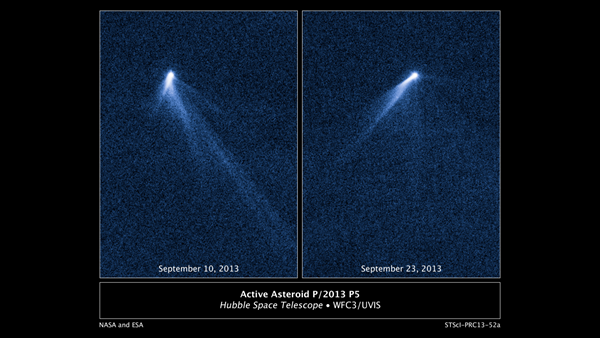A big difference between an asteroid and a comet has usually been that icy comets can develop tails while rocky asteroids generally do not. That is, until this recent discovery of some very unique asteroids came to light.
Astronomers are interested in these particular asteroids not just because they split in two, but some are also sprouting tails.
The asteroid pair the astronomers have become most interested in is P/2016 J1. Fernando Moreno, a researcher at the Institute of Astrophysics and Andalusia (IAA-CSIC), said in a press release, “The results derived from the evolution of the orbit show that the asteroid fragmented approximately six years ago, which makes it the youngest known asteroid pair in the solar system to date.”
Besides being the youngest asteroid pair, P2016 J1 has another feature that makes it interesting to astronomers.
Moreno said, “Both fragments are activated, i.e., they display dust structures similar to comets. This is the first time we observed an asteroid pair with simultaneous activity.”
Studies showed that the asteroid pairs were activated at the point on the orbit closest to the Sun and remained that way for somewhere between six to nine months.
Moreno thinks the dust is likely caused by “sublimation of ice that was left exposed after the fragmentation.”
Asteroid pairs are a common occurrence in the main asteroid belt. The pairs form when an asteroid breaks in two pieces, either from an impact, excess rotational speed, or, in some cases, two asteroids destabilizing each other’s initial orbits.
Though the pairs are not gravitationally linked, they do have similar orbits around the Sun. The pairs move in quasi-circular orbits between Mars and Jupiter, so they do not experience the temperature change that causes tails on comets. There have been about 20 documented cases of these asteroid pairs with an increased glow and a dust tail, and the asteroids have sometimes been called “main belt comets” as a result.
For more information on main belt comets, check out the April 2017 issue of Astronomy magazine.










